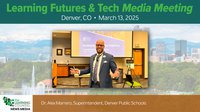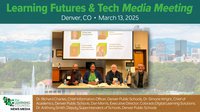Is your school ready to prep students for careers that don’t even exist yet? That’s not a futuristic "maybe later" question—it’s happening right now. From robotics to renewable energy, the job market is sprinting ahead, and education needs to keep up. But are our classrooms equipped to deliver both the personal touch students need and the skills the workforce demands?
It’s not an easy challenge. Schools are juggling tight budgets, technological growing pains, and the responsibility to mold young minds into tomorrow’s innovators. But here’s the exciting part—despite these hurdles, trailblazing solutions like Career and Technical Education (CTE), adaptive learning platforms, and even creative funding options are paving the way for schools to leap further into the 21st century.
Curious? Good. Let’s break down these trends and why they’re game-changers for schools and students alike.
Meet the Big Three Trends Changing Education
1. Careers Aren’t Waiting—Why Should Education?
Gone are the days when a high school diploma was all you needed to land a good job. Today’s industries are clamoring for skills in STEM—especially in engineering, robotics, and tech. But wait, aren’t those skills super niche? Surprisingly, no. They’re also all about critical thinking, collaboration, and creative problem-solving (skills everyone needs, whether they’re designing microchips or managing teams).
This is why Career and Technical Education (CTE) is currently taking center stage. No longer just for traditional trades, modern CTE programs are integrating cutting-edge tools, from programming robotics to exploring AI. Imagine students using state-of-the-art tools in class to solve real-world challenges. Sounds cool, right? That’s because it is. Plus, solutions like these help kids connect the dots between what they learn and how they’ll use it in the working world.
Case in point: At Sphero, we’re equipping educators with the tools to make this connection seamless. Everything from our programmable robots to our standards-aligned curriculum teaches students in ways that are as engaging as they are impactful, proving that hands-on, career-focused learning is here to stay.
2. One Size Doesn’t Fit All, Especially in Learning
Not all students learn the same way, so why should education still feel like an assembly line? Enter adaptive learning technologies—a high-tech approach to personalized learning. Using AI and data-driven algorithms, these tools shape curriculum around individual student needs. Visual learner? You got it. Love getting hands-on? Done. Prefer written explanations? High-five!
With adaptive platforms, schools can accommodate diverse learning styles and pace instruction to meet students where they are. What’s more, these tools encourage creativity and critical thinking—just what students need for a future of endless possibilities.
Beyond technology, personalized learning shows students they matter. It motivates them to engage deeper, work smarter, and dream bigger. Because when education feels personal, it feels worthwhile.
Pro Tip: Imagine incorporating devices like programmable robots for kinesthetic learners or augmented reality platforms to help visual learners “see” the math come to life. These aren’t “nice-to-haves” anymore—they’re “must-haves."
3. Money Talks—But Does It Follow Through?
Of course, for these awesome innovations to reach classrooms, schools have to overcome the biggest hurdle of all—funding. New tech means new budgets, and many educational institutions are pinching pennies to make it work. State grants like Perkins V funding (dedicated specifically to supporting CTE programs) are helping, but educators are also turning to creative solutions to stretch every dollar.
Corporate sponsorships, crowdfunding campaigns, and partnerships with private companies are becoming lifelines for schools looking for the next-gen tools needed to transform learning. Why? Because the goal isn’t just to afford these resources—it’s to make them accessible to every student, including those in underserved and underfunded communities.
Solving the Big Challenges
Of course, these trends don’t come without challenges. While they’re exciting, they also require schools to answer some tough questions, like how to maintain quality while scaling programs or how to ensure educators are trained to use new tech effectively. But here’s where the magic happens. L Schools can overcome these hurdles by teaming up with innovative partners and supporting teachers through professional development.
Start small. Think big. Measure often. Those are the keys to navigating this shift.
The Future is Now (And It’s Pretty Cool)
Here’s the deal—education isn’t just about exams or GPAs. It’s about preparing students to walk confidently into the workforce, curiosity blazing. With tools like CTE programs, adaptive learning tech, and innovative funding models, we’re closer than ever to bridging the gap between what students learn in school and what they’ll actually need in real life.
But this is just the beginning. Schools, decision-makers, and education leaders have the power (and, yes, the responsibility) to drive this transformation forward. Tools like those at Sphero can be the spark, but the real fire? That’s in you.
The opportunity to define the future of education is knocking—so answer it. Your students are ready. Are you?
About the Author
Paul Copioli is the CEO of Sphero, a leader in programmable robots, CTE, and STEM education tools. For more than 25 years, Paul has held various leadership roles in industrial and educational robotics. He continues to actively engage, coach, and participate in local and global robotics competitions.











